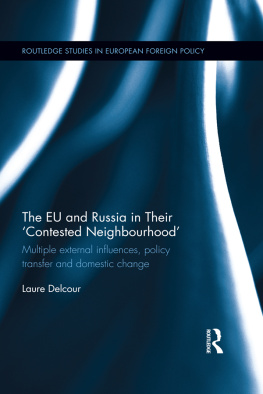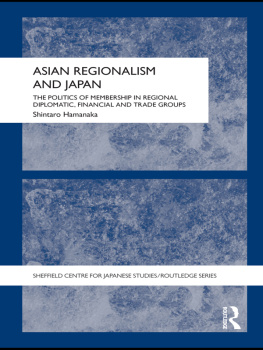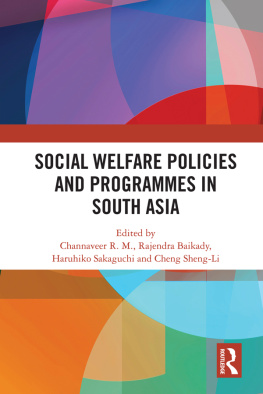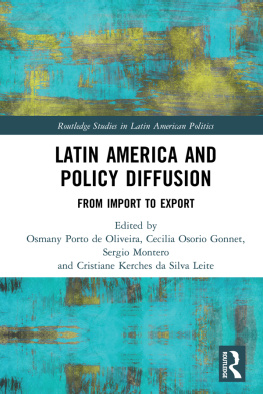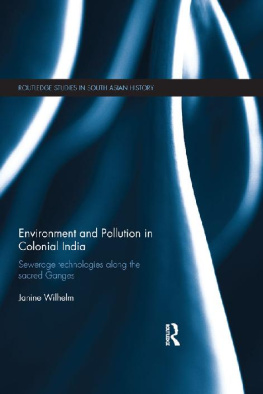Routledge Revivals
Conflict of Policies in Asia
In 1899, the U.S.s Hay Doctrine, more commonly referred to as the Open Door Policy, required Chinas trading ports to remain open to all countries on an equal basis. Originally published in 1924, in the wake of World War I, this book looks at the variety of different policies between Western and Asian countries throughout the 19th and early 20th century and shows how the powerful influences of European imperialism and American political doctrine disrupted Asias development. This title is ideal for students interested in Asian Studies and Post-Colonial Studies.
Conflict of Policies in Asia
Thomas F. Millard
First published in 1924
by The Century Co.
This edition first published in 2016 by Routledge
2 Park Square, Milton Park, Abingdon, Oxon, OX14 4RN
and by Routledge
711 Third Avenue, New York, NY 10017
Routledge is an imprint of the Taylor & Francis Group, an informa business
1924 Thomas F. Millard
All rights reserved. No part of this book may be reprinted or reproduced or utilised in any form or by any electronic, mechanical, or other means, now known or hereafter invented, including photocopying and recording, or in any information storage or retrieval system, without permission in writing from the publishers.
Publishers Note
The publisher has gone to great lengths to ensure the quality of this reprint but points out that some imperfections in the original copies may be apparent.
Disclaimer
The publisher has made every effort to trace copyright holders and welcomes correspondence from those they have been unable to contact.
A Library of Congress record exists under LC control number: 24012846
ISBN 13: 978-1-138-19180-8 (hbk)
ISBN 13: 978-1-315-63993-2 (ebk)
CONFLICT OF POLICIES IN ASIA
BY
THOMAS F. MILLARD
Author of DEMOCRACY AND THE EASTERN QUESTION, OUR EASTERN QUESTION, AMERICA AND THE FAR EASTERN QUESTION, THE NEW FAR EAST, ETC.
Copyright, 1924, by
THE CENTURY CO.
PRINTED IN U. S. A.
CONFLICT OF POLICIES IN ASIA
FOREWORD
The purpose of this work is to present my conception of the policy and interest of the United States in the Orient; but attitudes and policies of other nations principally concerned also are indicated, and the relation of Europe to the question.
The survey includes the post-World War period from the peace conference at Paris to the present, with enough of background to make the argument comprehensible. In presenting the subject I have chosen often to give my own memoranda written contemporaneously with the events to which they apply, feeling that this method has the merit of revealing pointedly the political processes which motivated and shaped these events currently, and that this is the better way to demonstrate political science. The memoranda are unrevised and undeleted except here and there to omit repetitions and personal allusions.
Explanations and criticisms of American institutions are included because this work may be read in parts of the world where American administrative functions are not well understood; and they relate to the foreign policies of the American Government.
THOMAS F. MILLARD.
February, 1924.
CONTENTS
CONFLICT OF POLICIES IN ASIA
T REND of world evolution has given the issues now focused in the Far East and the Pacific Ocean first place in the foreign policy of the United States of America. The Hay Doctrine has superseded the Monroe Doctrine in urgency and importance.
This statement, with its broad implications, runs contrary to general opinion of Americans. It challenges ideas that have become almost traditional. Yet assuredly it is true; and if proof is needed that the American Government is approaching realization of it, this will be found in causes and effects of the international conference held at Washington in the late months of 1921 and extending into 1922.
The doctrines to which the names of James Monroe and John Hay are attached were separated, in their pronouncement, by a lapse of about eighty years (182399); but both doctrines sprang from similar general causes and reasoning. Both are predicated fundamentally upon the geographical position and political institutions of the United States.
The Monroe Doctrine was pronounced because tendencies of European politics as expressed by alliances and combinations of the period, which was the outgrowth of the Napoleonic Wars, were deemed by American statesmen of that time to endanger, by encroachment and interference with new and weak states on the American continents, the free development of democratic institutions and ideals, and likely to create a situation in the Western hemisphere that might menace the security of the young American republic. The Monroe Doctrine as originally pronounced did not mention economic aspects specifically. The close linking of economics with international politics which has been an outstanding development of the last half-century had not begun to attract the serious attention of statesmen in President Monroes time. Nevertheless, although the term had not been coined then, in practice the Monroe Doctrine has been the major influence in maintaining the Open Door in the Western hemisphere.
The Hay Doctrine came about because of the development of conditions in the region of the Pacific Ocean and especially in eastern Asia which in the opinion of far-seeing American statesmen presented a danger to American political institutions and national security closely analogous to apprehensions of the statesmen of Monroes time. The Asian continent, with its immense populations, territory, and undeveloped resources, had become a field of imperialistic ambitions of the more powerful nations in Europe. A large portion of Asia had been annexed by European powers, and the process of bringing China and other weak Asiatic nations under the political and economic control of those powers was proceeding apace. While many thoughtful Americans perceived the danger and the economic disadvantages to America that might come from such developments, John Hay is credited with formulating and bringing into existence the international doctrine that bears his name.
The practical test of any political formula is found in its application to conditions as they arise; and in their practical applications the Monroe and Hay doctrines on close examination will be found to have the same fundamental motivations and very similar causations. The doctrines, however, differed in form.
The Monroe Doctrine had the form of a dogmatic statement of a unilateral position taken by the United States without consulting or seeking the approval of other nations.
The Hay Doctrine took the form of a diplomatic approach by the American Government to other powers with a view to establishing among them by general agreement a recognition of certain principles. What is called the Hay Doctrine consists of a number of diplomatic communications among governments, made at different times and under somewhat different circumstances, but in all of which the principles advocated by Hay are stated, recognized, and affirmed. All of the so-called principal powersGreat Britain, Russia, France, Japan, and Germanywhich then and thereafter took prominent parts in events with respect to China, have subscribed to the Hay Doctrine by diplomatic commitments, in alliances, and in public utterances of statesmen. The elements of Hays doctrine were taken as the foundation principles for covenants made at Washington in 1922, which covenants now may be considered as constituting the revised written international status.



